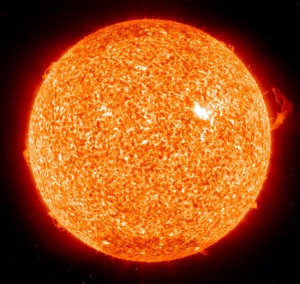At the end of last week the news broke that scientists at Cern believed they had managed to send subatomic particles faster than the speed of light! This was big science news, and potentially big technology news in the future, however I choose not to write about the discovery straight away, as I wanted to find out as much as I could before reporting back to you.
What happened?
So what basically happened last week was that scientists in Cern (Switzerland) who have been blasting neutrinos (subatomic particles) 732km all the way to Gran Sasso (Italy) for a good few years now, collated all their data, and found that it would actually appear that the neutrinos arrived at Gran Sasso when light was still 18m away Basically the neutrinos raced light 732km and won by 0.00000006 seconds – or as you could also say, 60 nanoseconds.
Is this true?
Scientists at Cern would tell you that their research has been checked and double checked, therefore what they have found out is true as they can’t seem to find a flaw in the research. However at the same time, almost any good physicist, and no doubt scientist working on the project would tell you that it can’t be true and that a variable must have been overlooked, as the results are impossible!
To verify the findings, two similar projects one in Hida (Japan) and the other in Chicago (USA) are attempting to recreate the experiment, and should have reliable enough results, hopefully, by some time next year.
Why is this important that the neutrinos travelled faster than the speed of light?
Einstein said that it was impossible to travel faster than the speed of light. If you like, light was the universal speed limit, no faster could anything ever go than light, you could go as fast, but not faster. This would mean that to get to the sun, (not that you would want to) the quickest you could ever do it would be in 8 minutes and 12 seconds.
If the results from this experiment are correct, with some extra thrust, it would be possible for the neutrinos to get there even faster than light could.
How have they ‘broken the speed limit’?
You may be wondering how the neutrinos managed to get to Gran Sasso faster than light, and as are many scientists! There are two main theories of how they did it at the moment.
The first theory is that the speed of the neutrinos was so great they were simply able to travel faster than light.
The second, much more interesting theory is that the neutrinos didn’t exceed the speed of light, but instead dimension jumped! This means that they probably didn’t travel faster than the speed of light, just used another dimension to get from Cern to Gran Sasso.

The Doctor’s TARDIS (from Doctor Who) travels in time and space, this is only possible if you can either go faster then the speed of light, or jump dimensions
Physicist Brian Cox has an excellent explanation of how this could potentially work. When talking about extra dimensions he has said that:
“…if they are right, then things can take short cuts through the extra dimensions. It’s just like saying there is a speed limit that stops you going, lets say you go from London to Sidney, so you fly around the earth from London to Sidney, but the other way to do it, is go through digging a big tunnel, straight through the earth and that’s a shortcut. So in some ways, extra dimensions can behave like that, so what could be happening is the neutrinos could be taking a shortcut thorough another dimension.”
If this were right, then Einstein’s theory of special relativity wouldn’t be violated, just only valid in three dimensions.
What next?
The data is now out there on the net, for all scientists to analyse. Also, there are many places that are going to try and replicate the stud, to prove or disprove the results.
Hopefully we will have some more news soon, as to whether we actually can get things to travel faster than the speed of light, and as to whether there are are more than three (four including time) dimensions!
Anyone else slightly excited by this? 😀

